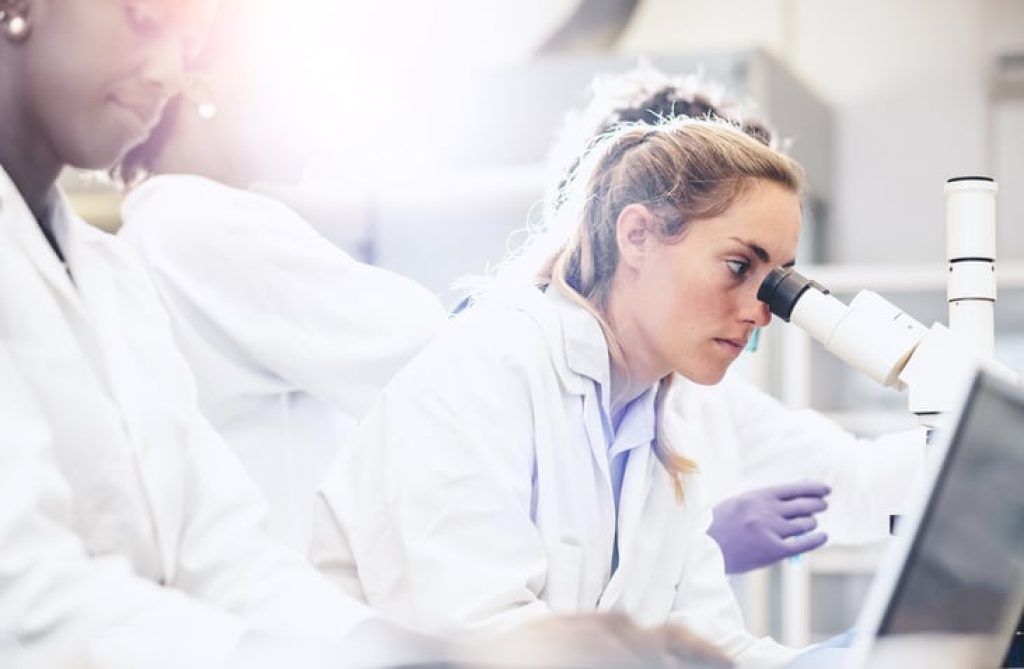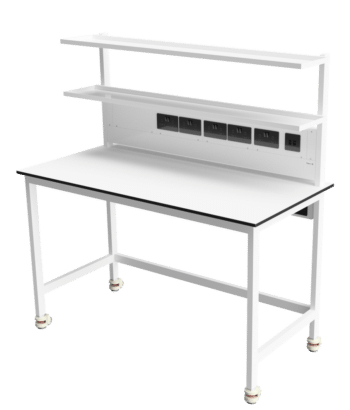All those long hours crouched over a microscope can build up, leading to ergonomic injuries that make lab work difficult over time. Staying safe and maintaining a working environment that avoids maladies, injuries and other follies is hugely important. Lab workers risk injuries caused by repetitive motions such as pipetting, typing on keyboards, awkward positions hunched in biosafety cabinets and much more.
To this end, we’ll guide you through ways to avoid lab-based ergonomic injuries to lessen stress on muscles and joints, optimise the flow of blood and ensure you’re working at your best in a comfortable environment every day of the week.
Quick Navigation
- Stay aware of your posture
- The risks of repetition
- Avoid static positions for too long
- Safety at cabinets
- At your computer
Stay aware of your posture
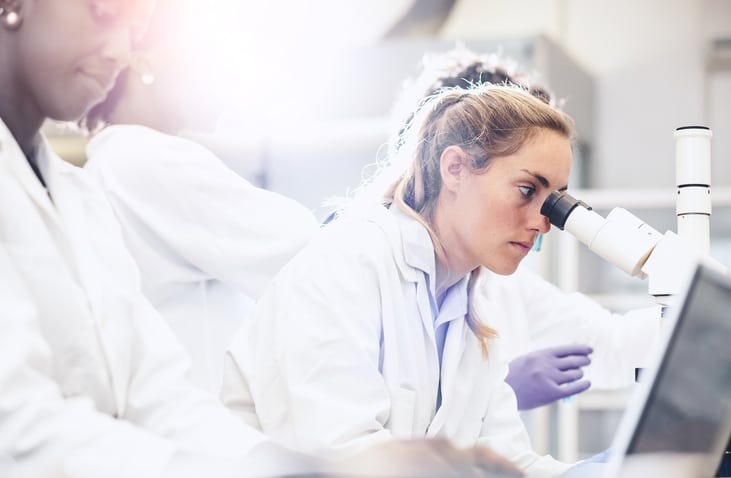
The natural, S-shaped curve of the back is aligned in a way that ensures the ears, shoulders and hips are in the same plane. However, the curve can be subjected to all manner of kinks and positions that lead to poor posture and injury over time. If you find yourself slumped in your chair or hunched over your workstation, then becoming more aware of how you are sat or stood up can be hugely beneficial to your comfort.
Ensure your chair has plenty of back support and that you sit upright against the back of the chair. If you need it, it’s worth investing in some lumbar support if you tend to be sat down for long periods of time. If your feet dangle, a footrest helps to bring them in line with the hips, which is great for maintaining good posture.
Instead of bending forward, use a seat wedge so you’re working without jutting your chin forward or putting strain on your back. Additionally, try to work at a desk with a cut out to ensure you’re as close to your work as possible without having to come forward from against the back of the chair.
If you’re stood up, supportive shoes and cushioned mats can ease the strain. Place the supplies and equipment you regularly use close to hand so you aren’t changing your position or posture all the time. Keep your shoulders relaxed and elbows close to the side, and make sure you aren’t stretching for work materials.
The risks of repetition

If you’re pipetting frequently throughout the day, you can risk strain and injury through the repetitive motions it requires. Ease the tension by keeping a relaxed grip, avoiding rotation of the wrist, use both hands, and alternate between hands when necessary. See if your lab has pipettes with finger aspirators and thumb dispensers to lessen pain on your thumbs, or use electronic models whenever possible. Be sure to take a 1-2 minute break every 20 minutes of pipetting, too.
When working with a microscope, sit close to the work surface, ensure the areas that you lean on are padded, and adjust your chair, workbench or microscope to maintain an upright head position. Similarly, mounting the microscope at a 30° angle can help make viewing easier and lessens the tension on your neck.
Be sure to spread work involving microscopes throughout the day and if possible, share it with others in your lab. Be mindful of taking breaks every 15 minutes to refocus your eyes; stretching and moving every 30-60 minutes helps too.
Avoid static positions for too long
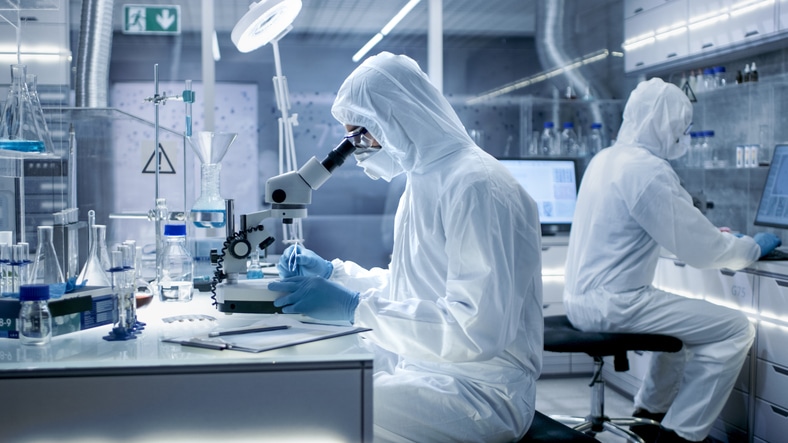
As we’ve mentioned, breaking up your activity with regular movements is key to avoiding ergonomic-related risks in the lab. Changing position often rests the muscles and increases circulation. Propping yourself up on a stool shifts your weight and relieves pressure on the back, while alternating how you hold objects takes off some of the strain of your digits.
Safety at cabinets

When working in a biosafety cabinet, it’s beneficial to arrange the supplies you’re working with in order of use; keep the most frequently used items near the front of the hood but no closer than six inches from the face of the hood. An elevated turntable is also great for easily retrieving the necessary materials without straining and stretching, while an adjustable chair puts the shoulders in a relaxed position for optimal working.
At your computer
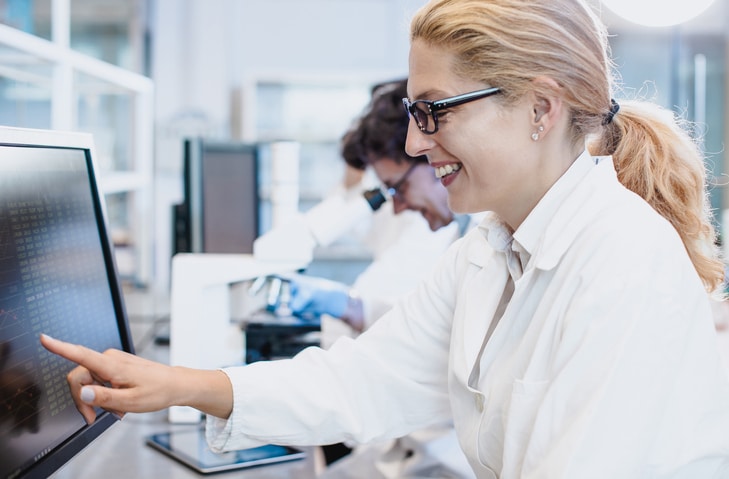
At a computer, there’s all manner of opportunity for hunched shoulders, strained eyes and poor posture, so if you’ve gotten into some bad habits, it’s well worth changing your approach. To start, consider where your computer is positioned; if it’s close to doors, entrances and passageways, there’s a chance you’ll be constantly looking to your side if people are approaching. Not only is this distracting, but the repetitious movement will cause tension on the neck.
Place your monitor so the top of the screen is approximately at eye level. That way, the eyes naturally gravitate towards the centre of the screen, and there’s no need to crane your neck upwards. Take small breaks every 20-30 minutes and if you’re moving to a different task, such as pipetting, then take a break for around 15 minutes so your hands have time to recover.
Staying safe and comfortable in the laboratory is of the utmost importance. InterFocus can help you create the perfect working environment. For more information about our bespoke fitted labs, visit our homepage or call our team on 01223 894 833.

